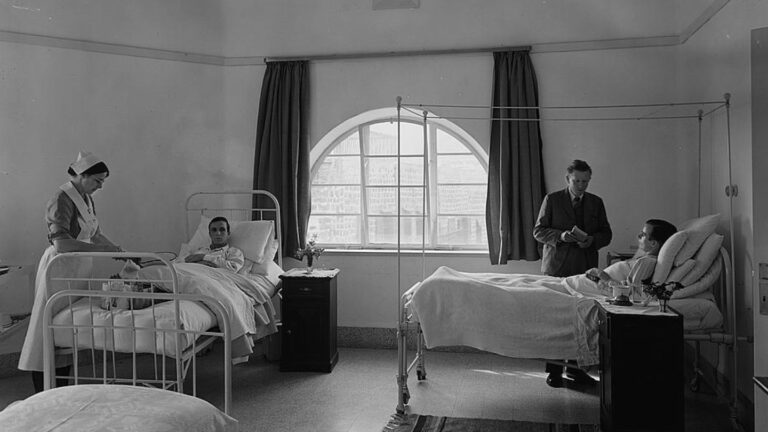Toward the end of World War I, as the Ottoman Empire was crumbling in the face of Western powers, British Prime Minister David Lloyd George requested that General Edmund Henry Hynman Allenby deliver Jerusalem “as a Christmas present for the nation.”
That was in June 1917. By mid-November, Allenby’s Egyptian Expeditionary Force (EEF) launched its Southern Palestine Offensive, beginning with the ANZAC Desert Mounted Corps’ successful Battle of Beersheva on October 27, followed by attacks on Gaza on October 30. With the Gaza-Beersheba line now weakened, the EEF pushed the Ottoman forces to Jaffa.
After three weeks of fighting in the Judean Hills, the British captured Jerusalem on December 9, 1917, and Allenby walked through the Jaffa Gate on December 11. Standing on the steps of the Tower of David, he proclaimed British martial law and accepted, together with Division Commander Major-General John Stuart Mackenzie Shea, the symbolic keys to Jerusalem.

In this proclamation, read to the city’s residents, Allenby recognized the importance and uniqueness of Jerusalem and called upon the city’s residents to continue living their lives as usual and to enjoy freedom of worship, religion and tradition under the patronage of the new government.
“[S]ince your city is regarded with affection by the adherents of three of the great religions of mankind, and its soil has been consecrated by the prayers and pilgrimages of devout people of those three religion for many centuries, I make it known to you that every sacred building, monument, holy spot, shrine, traditional site, endowment, pious bequest or customary place of worship, of whatever form of the three religions, will be maintained and protected according to the existing customs and beliefs of those to whose faith they are sacred.”
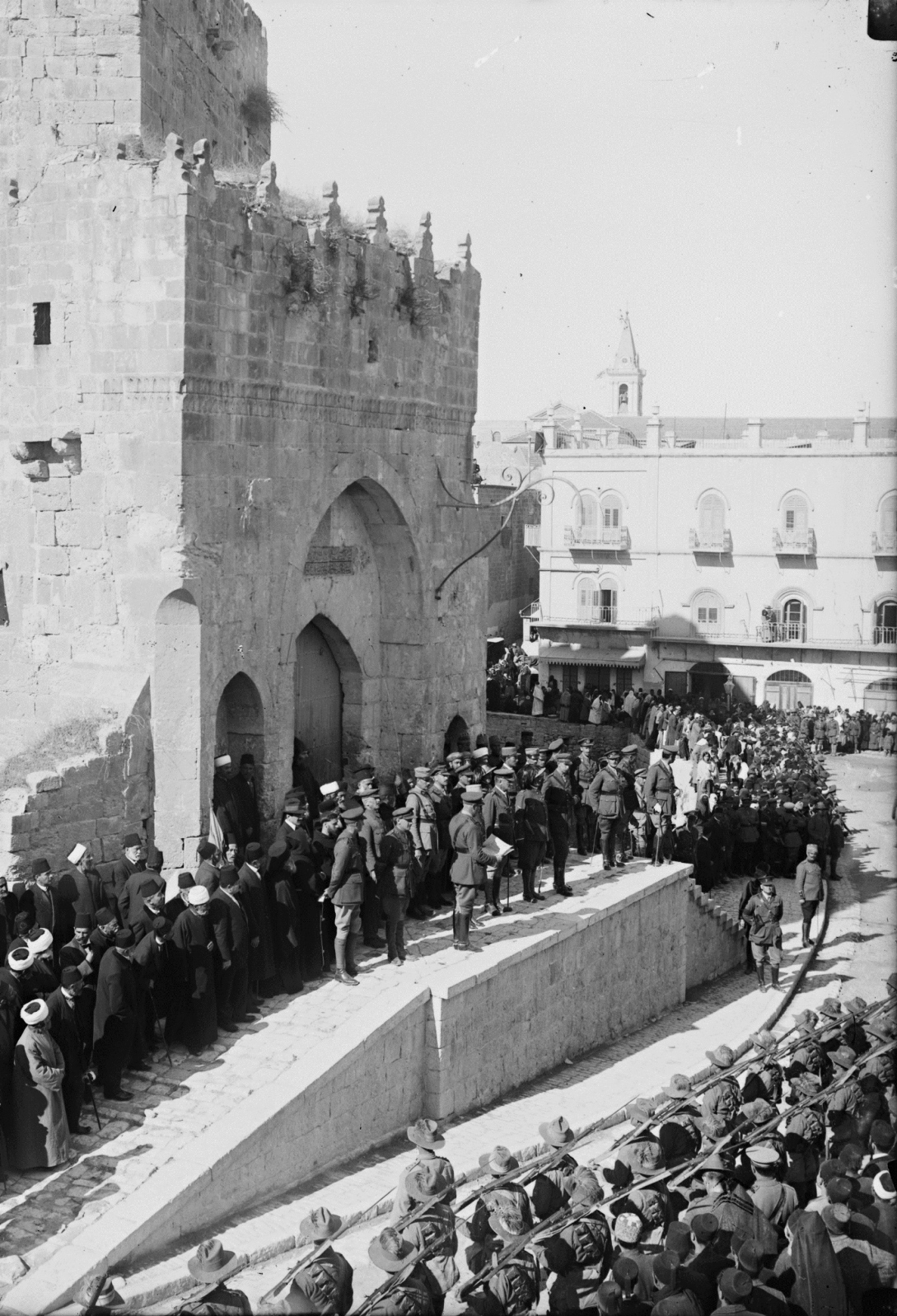
Church bells in London and Rome were rung in celebration of what was seen as the return of Christian rule for the first time since the fall of the Crusader Kingdom of Jerusalem.
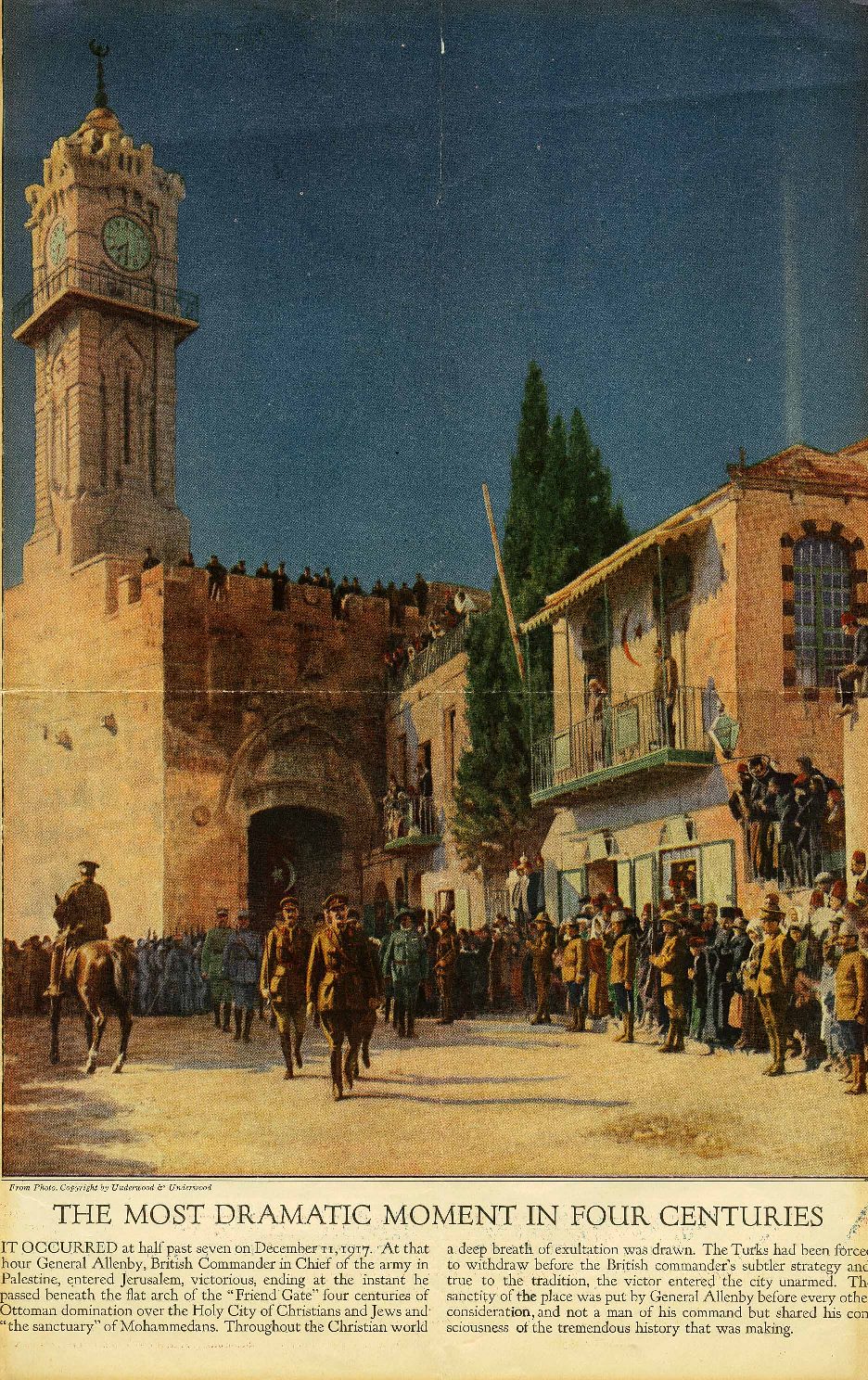
For Jews, as December 9, 1917, was also the first day of Hanukkah, the event was interpreted as a modern-day Hanukkah miracle. The Balfour Declaration had been issued only a month earlier, stating that His Majesty’s Government stated that it viewed “with favour the establishment in Palestine of a national home for the Jewish people.”
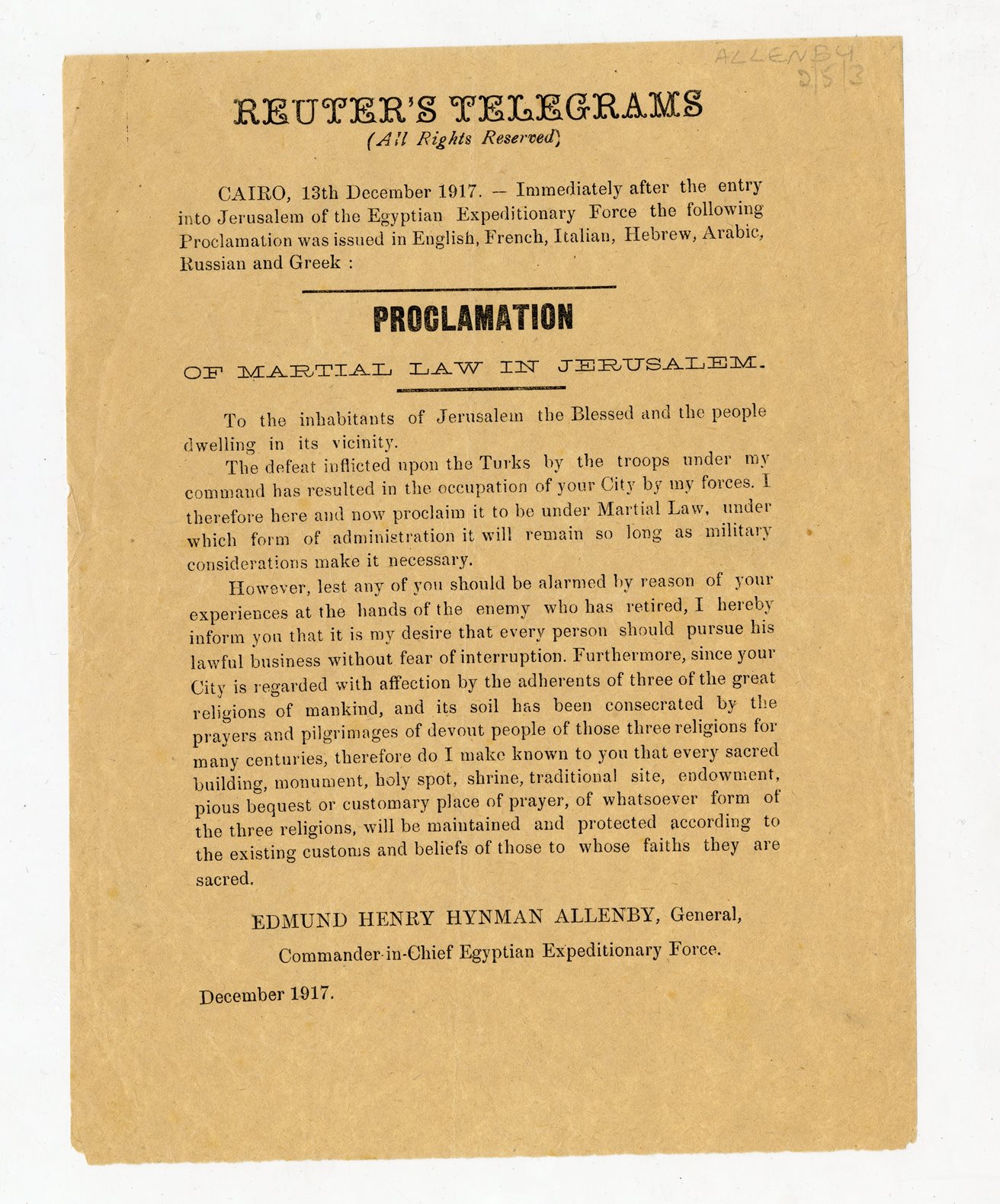
Now it appeared that this promise was to be fulfilled. Moreover, Allenby’s proclamation was written in several languages, including Hebrew — the first time in modern history that the Hebrew language received international recognition.
That historic moment was recreated last week, exactly 100 years later, in the presence of Jerusalem Mayor Nir Barkat, Viscount Allenby of Megiddo and Felixstowe, Sara Viscountess Allenby, and John Benson, the great-grandson of General Shea, together with dignitaries and representatives of Old City Christian communities.
The proclamation was read aloud, as it was 100 years ago, in English, French, Hebrew, Arabic, Russian, Greek and Italian. This time, it was also read in Armenian in acknowledgment of that Old City community.
The reenactment of the photograph showing Allenby and Shea on the steps of the Tower of David accepting the keys to the city marked the opening of an exhibition entitled “A General and a Gentleman – Allenby at the Gates of Jerusalem” at the Tower of David Museum.
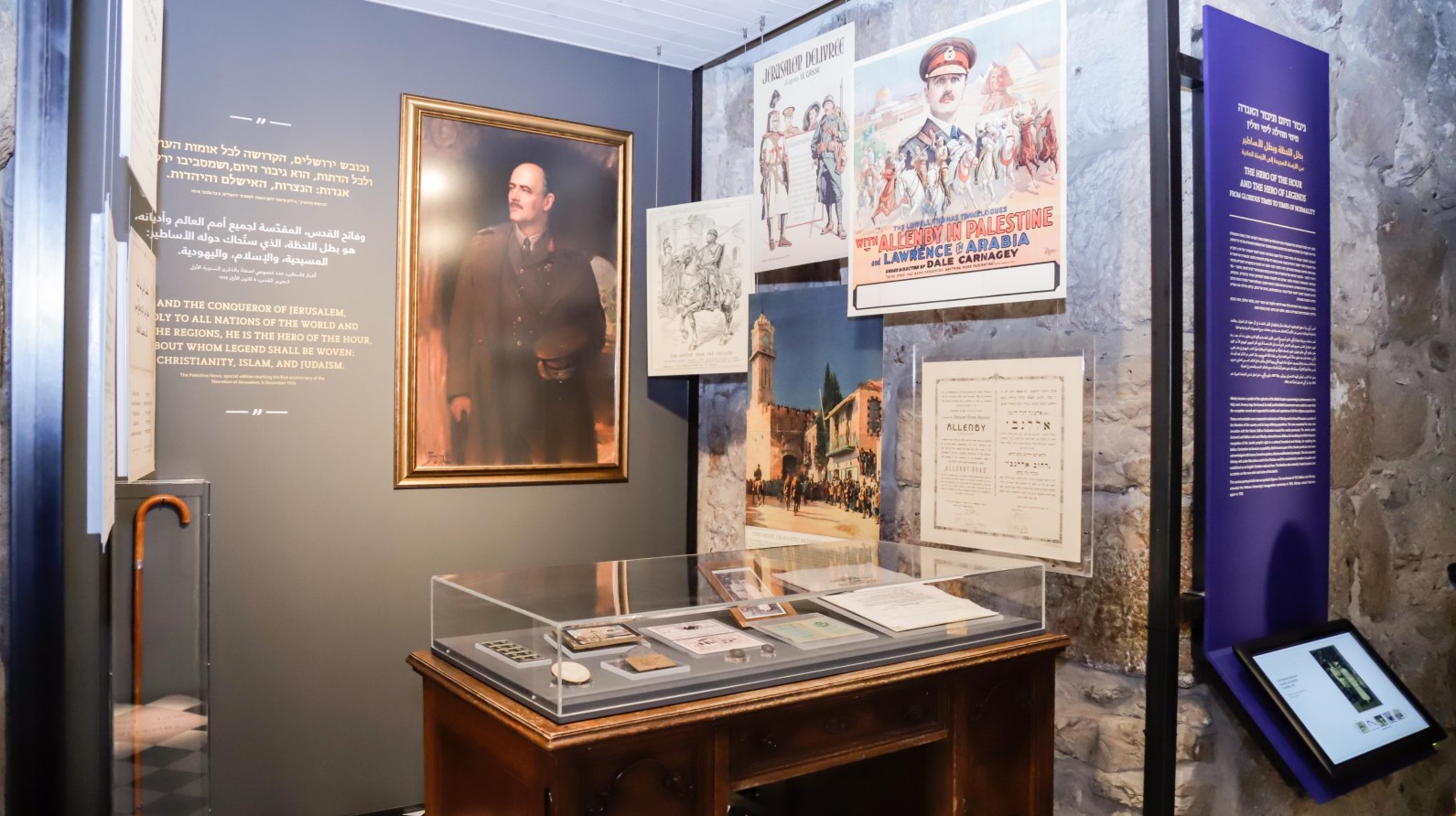
The exhibition tracks the dramatic events that unfolded in a single week that marked the beginning of a new era in the history of Jerusalem.
As described by curator Dr. Nirit Shalev-Khalifa, “The exhibition focuses in detail on the events that unfolded over three days – the ninth, tenth, and eleventh of December 1917 – when the Holy City was entrusted to its new custodians in a sequence of solemn, meticulously planned events and ceremonies that were both restrained and splendid, as well as several comic incidents and many local legends.”
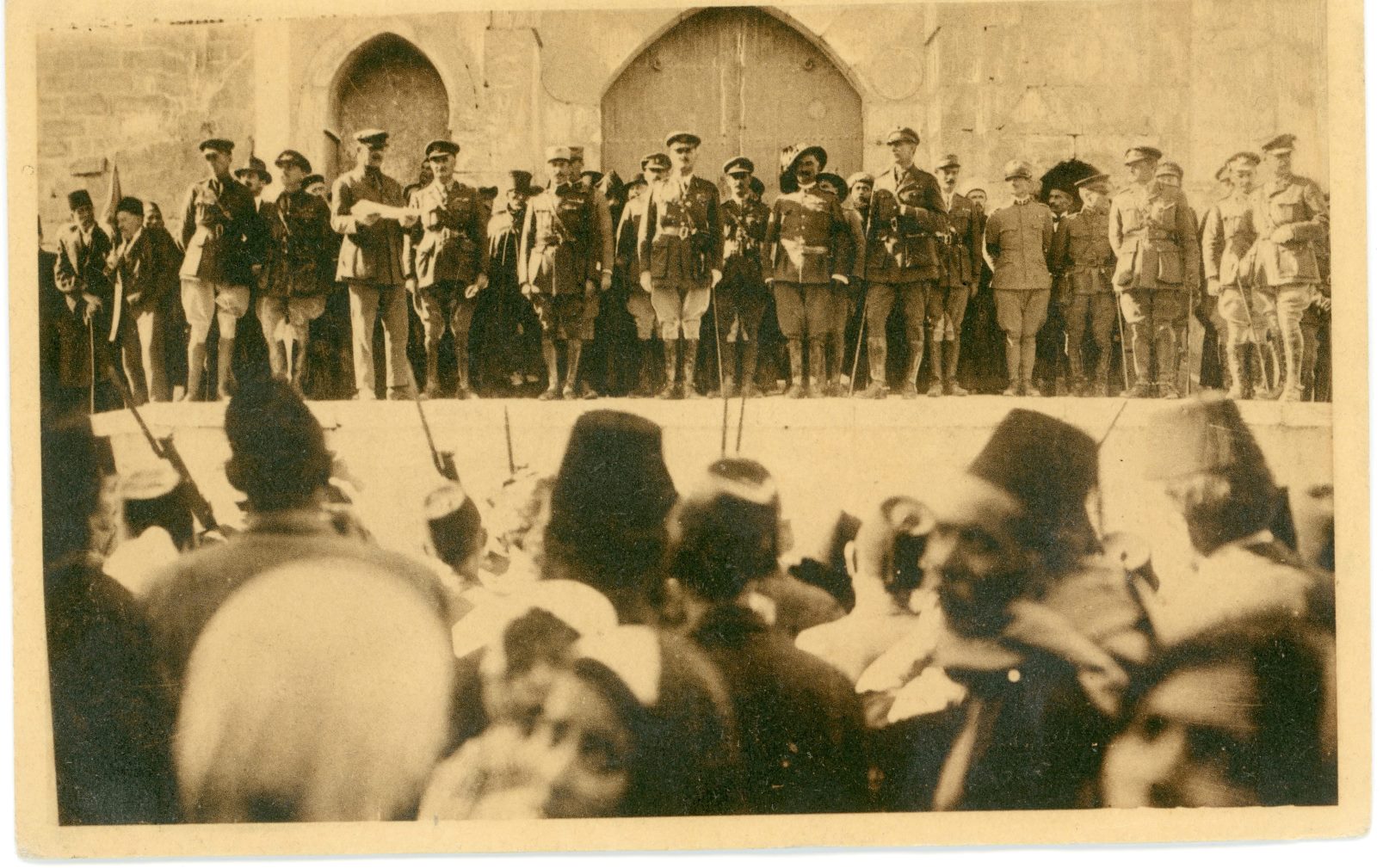
The exhibition presents movies, photographs, certificates, posters, mementos and other original and rare objects, including travel journals, photo albums and personal equipment reflecting historical events from the perspective of soldiers on both sides.
“The Tower of David is the museum of the city of Jerusalem and we commemorate crucial events in the city’s history by creating compelling exhibitions that bring alive for the general public the historic moments that have shaped our city,” said Director and Chief Curator of the Tower of David Museum Eilat Lieber.
“A General and a Gentleman – Allenby at the Gates of Jerusalem” will run through September 2018 at the Tower of David Museum in Jerusalem.




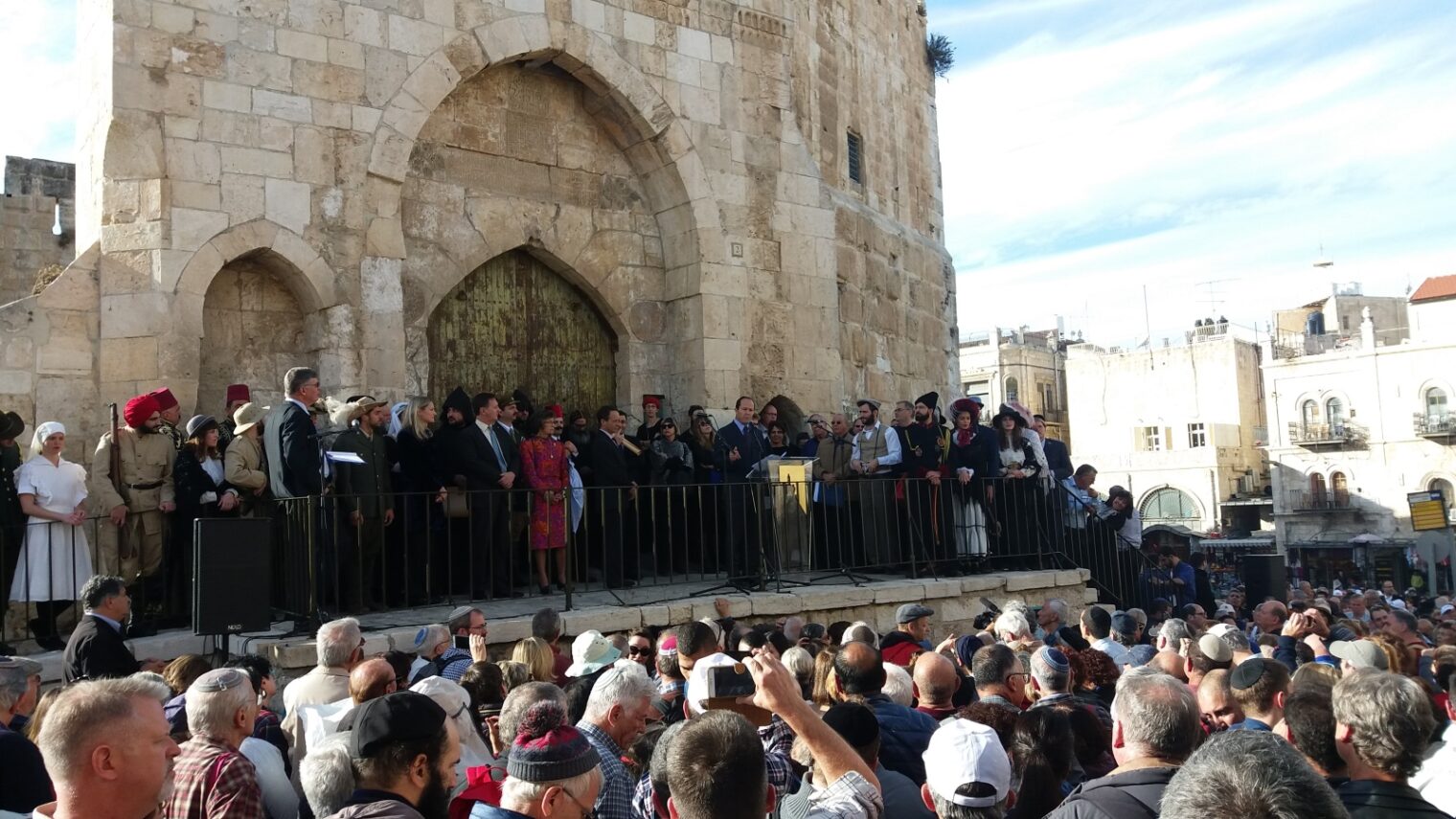









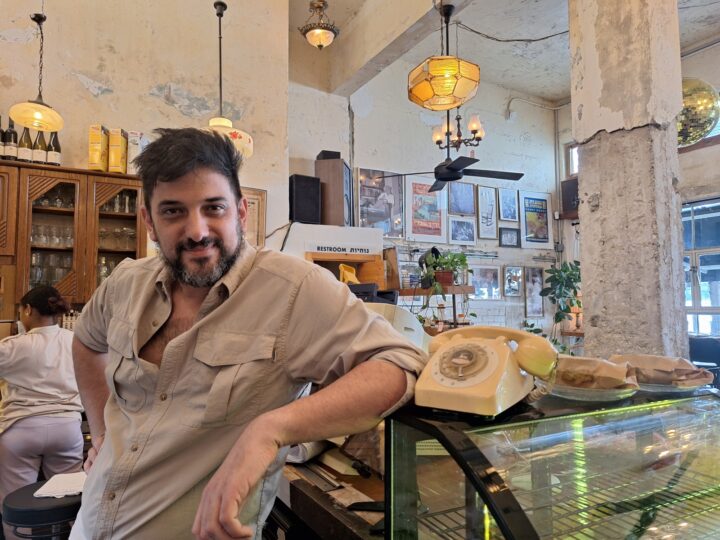
![Elections 1977 – Likud posters] In 1977, Menahem Begin led an election upset as Israel’s first non-Labor prime minister. Credit: GPO Elections 1977 – Likud posters] In 1977, Menahem Begin led an election upset as Israel’s first non-Labor prime minister. Credit: GPO](https://static.israel21c.org/www/uploads/2019/09/Elections_1977___Likud_posters_-_GPO-768x432.jpg)
